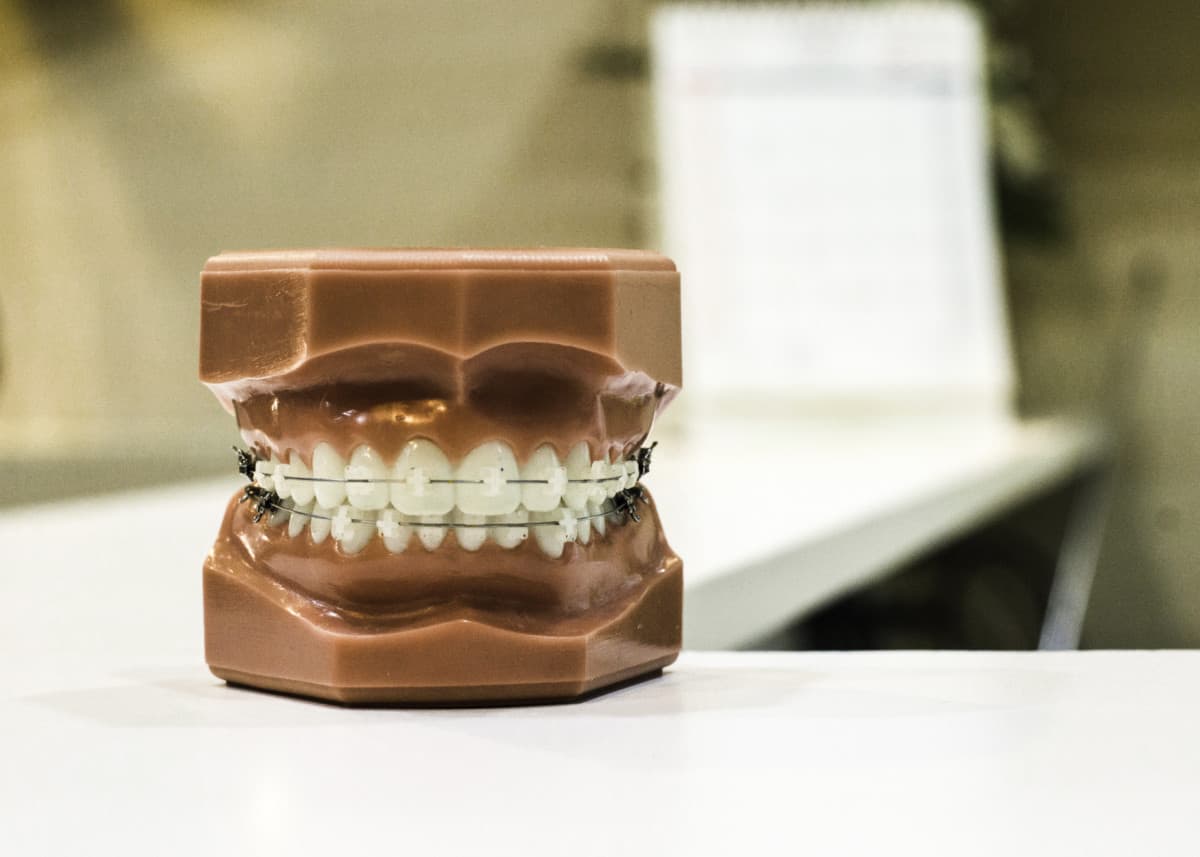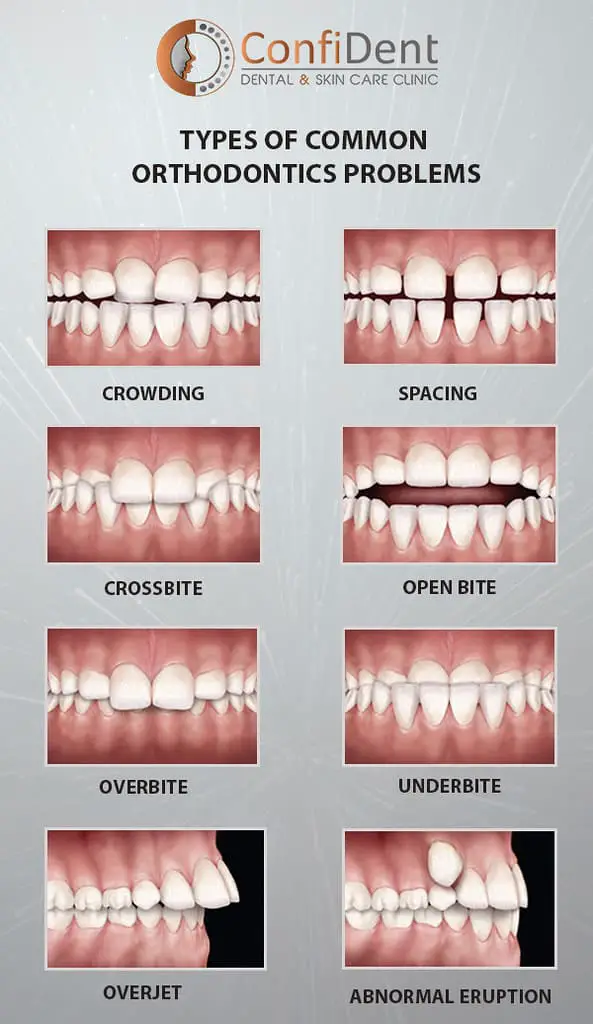
There is more than meets the eye when it comes to orthodontics and the need for dental braces. As a dental hygienist who has had braces two times, I can say that even though going through orthodontic treatment can be work, the time goes by quickly, and the result is priceless.
Dental braces and orthodontics are considered medically needed. Even though the main benefit is how the teeth look, things like function, bite, speech, eating and self-confidence are improved. Having teeth in alignment reduces decay and gum disease because oral hygiene is easier and more effective.
Some smiles can look perfect, the teeth look straight, and the person’s smile looks amazing. But maybe their bite is off, or because of a misaligned tooth, they tend to bite down on their cheek. In this post, I go over all the reasons why braces and orthodontics are more than just for looks!
Cosmetic vs Medical
Cosmetic dentistry comes in many forms and primarily focuses on how the teeth look. However, the main goal of orthodontics is to create a functional and beautiful smile that works great, looks great, and minimizes disease.
Each part of our entire body works together and can determine health or disease. Our mouth is the gateway into the rest of our body. When our mouths are unhealthy, the rest of our body is unhealthy. And bad oral health and gum disease is linked to many chronic diseases, such as;
- Diabetes
- Alzheimer’s
- Chronic inflammatory conditions such as rheumatoid arthritis
- Heart disease
- Bacterial endocarditis
- Bacterial pneumonia
- Pregnancy complications such as pre-term birth and low birth weight
To read more on this, here is a link to a study about oral health and systemic health.
to a study about oral health and systemic health.
This is why regular dental cleanings is so important because it helps to maintain oral health, reducing oral diseases.
Related post: How Dental Hygienists Clean Your Teeth
Having braces and orthodontic treatment affects appearance and functions such as bite, speech, and eating. And all of these things contribute to good oral health and overall body health and can improve self-confidence. I know mine did!

Appearance
One of the great benefits of having braces is the outcome of how the teeth look. When teeth are in proper alignment and function, they have a better appearance and can be cleaned more effectively.
Because oral hygiene can be more effective, it reduces stains, build-up on the teeth, and the toothbrush will be able to reach more areas resulting in reduced gingivitis and gum disease.
Did you know that your smile is what people notice most about a person after their eyes?
Bite
Teeth are meant to come together in a certain way, and each tooth in the mouth has unique blueprint anatomy. When teeth do not bite together properly, it can cause wear and trauma to the cheeks, tongue and teeth.
When teeth bite together properly, our bite’s pressure is evenly dispersed. The power of our bite averages 162 PSI (pounds per square inch) and can be relatively higher depending on the age of the person. Imagine if all that pressure is focused on a couple of teeth because they are out of alignment. This can lead to worn, cracked, broken teeth and tooth loss.
(pounds per square inch) and can be relatively higher depending on the age of the person. Imagine if all that pressure is focused on a couple of teeth because they are out of alignment. This can lead to worn, cracked, broken teeth and tooth loss.
Speech
How the teeth are aligned and positioned can affect speech factors. Especially the front teeth and the roof of the mouth. These surfaces are used to make most of the sounds we use to form words. People with an open bite, large spaces between teeth, or excessive tooth wear can have a hard time with pronunciation and clarity of their speech.
Overjet and overbite (see the picture at the beginning of this post for reference) are common causes of a lisp. This can have a large impact on self-confidence and self-esteem. Amazingly, this can be corrected through orthodontics.
Eating

More severe malocclusion can make eating very difficult. People with an open bite may not be able to bite into things such as apples or sandwiches. Foods that need to be “torn” to chew with the back teeth are sometimes off the table. They will need to be cut up before eating.
Or if the back teeth don’t touch, food isn’t able to be broken down enough before we swallow.
Each category of teeth plays a different role in eating.
Incisors
These teeth cut food with their sharp edge in a shearing action. They break up the food into chewable-sized pieces.
Canines
The canines are the anchors of the mouth with the longest roots, they frame our face, but their primary function in the mouth is to grip and tear food.
Pre-Molars
These teeth help to tear and crush our food and break apart food into smaller pieces.
Molars
The molars are the workhorse of our mouth as they are the last teeth before the food makes its journey through the body. Molars grind and chew the food, breaking the food up into even smaller pieces.
Self-confidence
I can definitely speak from experience here. Braces changed my life, seriously changed my life.
After I got my braces off, I wasn’t trying to hide my smile or shy away from conversations, and my crooked smile was not on my mind constantly. I became much more confident and proud of my smile because my teeth were straight.
I laughed more easily, not embarrassed of full belly laughs where my teeth would show. I used to think about everything that would make a crooked smile front and center.
And when people start to compliment you on how nice your teeth and smile are, it’s uplifting and drastically increases self-esteem and confidence.
In this study , the direct impact of crooked teeth on self-esteem and psychosocial behaviour is observed. People with dental disorders, including malocclusion (crooked and misaligned teeth), significantly impacted how individuals perceived their attractiveness.
, the direct impact of crooked teeth on self-esteem and psychosocial behaviour is observed. People with dental disorders, including malocclusion (crooked and misaligned teeth), significantly impacted how individuals perceived their attractiveness.
This can be applied to every aspect of life; careers, relationships and first impressions.
Get opinions from different orthodontists before treatment
When you are spending money on your health, it’s best to have a couple of different opinions. Not to say that one professional may be wrong, but there may be a better, healthier and less risky treatment plan.
The best thing my parents ever did for me was get multiple opinions. We got 3 opinions before going with one of them. The first orthodontist I saw wanted to extract all my canine teeth, an old and outdated practice.
The canines are the corners of our mouths with the longest roots and frame our faces. Thankfully my parents were skeptical and thought of getting another opinion.
Another orthodontist wanted to wait too long and thought that I needed some of my pre-molars extracted.
Finally, the third orthodontist I saw was a game-changer. He was so honest and humble and came across as if he really cared. I trusted him, and so did my parents.
And I came out of orthodontic treatment will all of my teeth and a beautifully functional smile. The orthodontist and his team are one of the main reasons I went into dental hygiene because I wanted to give people what he gave me.
Trust your gut when you go for a consultation and research what they are recommending online.
Sometimes people can pigeonhole themselves with one provider, and because they are specifically trained, we invest a level of trust.
But they are still people who can make mistakes or approach a treatment plan differently than they should. And the dental world is full of providers with dollar signs in their eyes, and it can be hard to find the diamond in the rough.
What is the difference between braces and Invisalign? And which one is faster?
Dental braces use either a metal or ceramic bracket that is glued to each tooth, and wires and elastics are used to manipulate the teeth.
Invisalign uses clear plastic trays; only some teeth will get plastic (composite) brackets called buttons. The trays click into the buttons to use them as an anchor to move the teeth.
Both usually take the same amount of time, although Invisalign is most often used for minor cases that don’t need all the time that traditional braces need.
I would be very skeptical if a company or dental professional is advertising “straight teeth in 6 months”.
Moving teeth takes time, and if it is rushed, it can result in bone loss and even cause the roots of the teeth to resorb. Root resorption causes the roots to become shorter, leaving the teeth more vulnerable to loss due to gum disease.
Many people are looking for a quick fix, but you could be paying for it in the long run.
Holly 🙂

